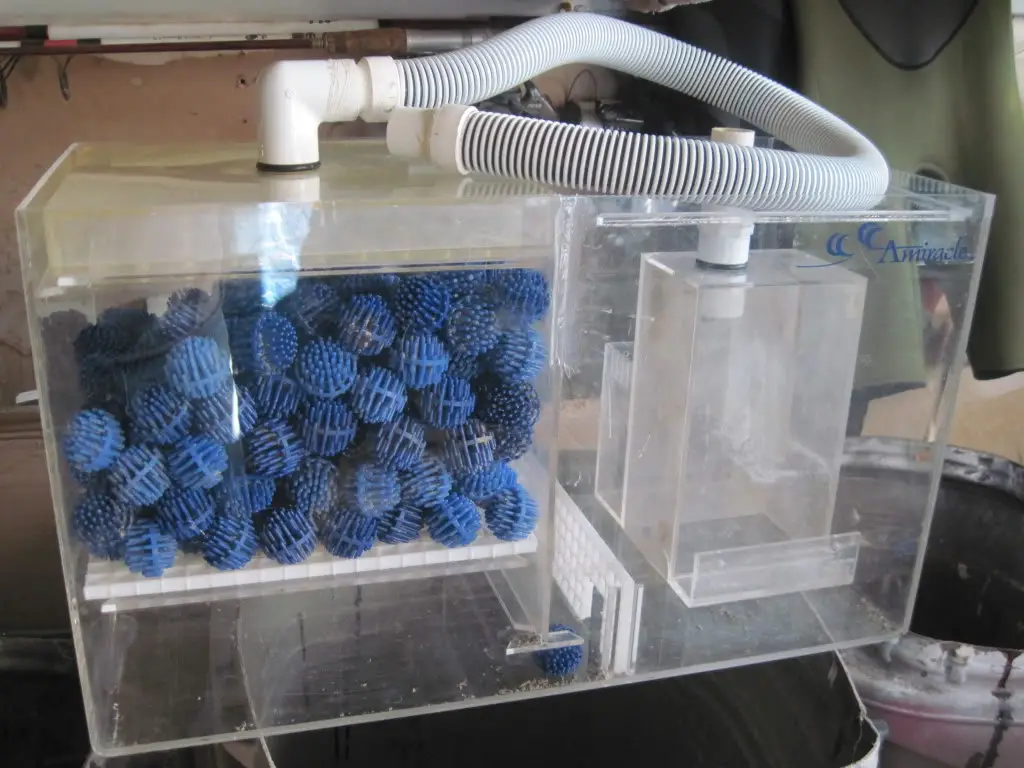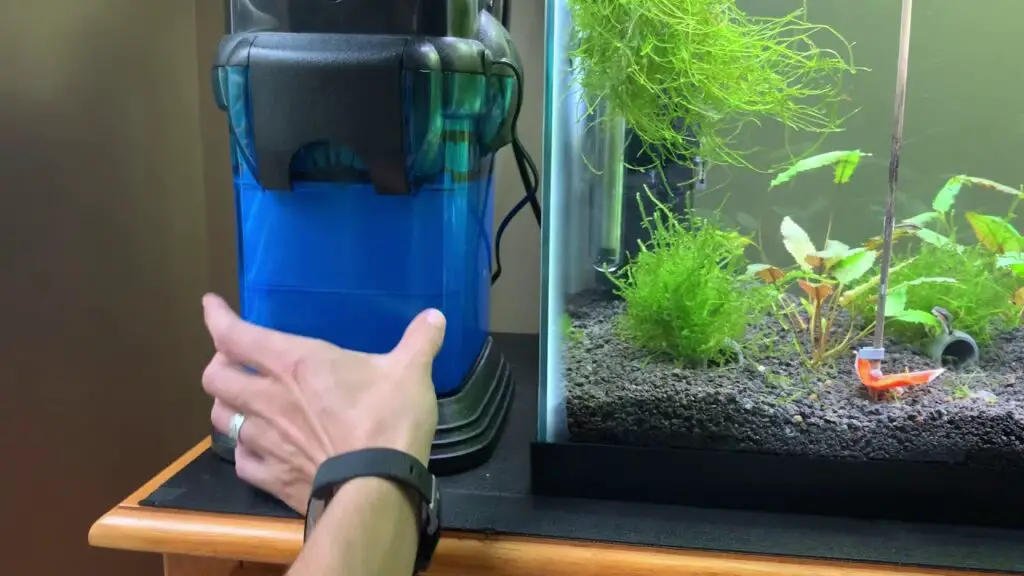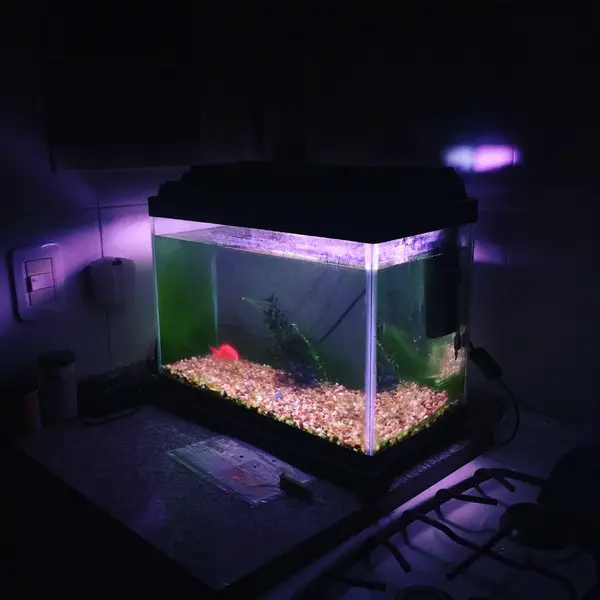Are you thinking about building an aquarium as a new hobby? Most people consider fish a maintenance-free pet, however, that is never the case. Fish need a lot of attention, particularly in the aquarium, which serves as their living environment. Getting a good filter to keep the environment clean is essential. A wet dry filter may work miracles.
A wet dry filter is an expensive piece of equipment that is the best system to keep the aquarium clean. They contain a layer of dry bio balls and a separate layer of wet filter pads (drip plate) to provide the perfect combination.
In this article, I will dive deeper into wet/dry filters, how they work, and why they might be suitable for freshwater aquariums. I will also explain trickle filters and the differences.
What are wet dry filters?
A wet/dry filter is a high-end system that can be installed into tanks with no corals or live plants. It is the best method to maintain a suitable environment for fresh and saltwater fish.
The system is installed underneath the tank in an acrylic box where all of the system other than the overflow box is contained.
Overflow boxes
Overflow boxes are used to drain the water from the aquarium above into the filtration system, where it is contained and ready to be filtered. Overflow boxes can be hung at the back of the aquarium but may also be preinstalled in “reef-ready aquariums”.
Working of wet/dry filters
The working of a filter with a hung overflow box may differ from a preinstalled overflow box. The water is drained from the aquarium using a siphon with a hung overflow box. With a preinstalled overflow box, the water is drained simply using gravity.
Once the water has been collected in the overflow box, it is then sent to the drip plate. This is a flat plate with multiple tiny holes to distribute one larger stream of water into multiple smaller ones. The filter plate serves a two-fold function. This is where most of the filtration takes place. Large unwanted particles are removed from the water at this part of the process.
Its second function is to prepare the water flow for the following filtration process by creating an even spread-out flow. Therefore, keeping the drip plate clean is essential to ensure no pores are clogged.
The second process involves running the water through the bio balls. These bio balls can hold a massive quantity of bacteria due to the way they are shaped and constructed. Because the bio balls are positioned above the water filter, they are constantly exposed to air and oxygen, making them the perfect breeding ground for bacteria.
You might be thinking shouldn’t the filter kill the bacteria? Well, the bacteria decompose waste that the water contains and makes it suitable for the fish to live in.
Another advantage the bio balls provide is the aeration of the water. As the water is split into smaller streams by the drip plate, it hits the bio balls’ spikes as tiny droplets. The spikes break the water droplets, and the eventual rejoining of the droplets allows oxygen to be trapped between the droplets.
The water is then collected below in a reservoir and then pumped back to the main aquarium once the filtration is done.
Are wet dry filters good for freshwater aquariums?
Even though the system is perfect for maintaining a healthy environment for fresh and saltwater fish, it might not be the perfect option in a freshwater aquarium with live plants or corals.
The wet dry filter will turn oxygen production into overdrive which will cause a shortage of carbon dioxide and not allow plants to thrive.
Another disadvantage for freshwater aquariums is the overproduction of nitrates attributed to the bio balls. These excessive nitrates may cause harm to corals and other invertebrate creatures in your tank.
How do wet/dry filters start?
In the case of most wet dry filters, the overflow boxes are not preinstalled. As mentioned earlier, these overflow boxes can be attached later and hung at the back of the tank. The system starts with the drainage of the overflow box onto the drip plate.
The drainage is done using a siphon. A siphon is a technique that sends liquid upwards from a higher water level and then down the pipe to a lower tank. The technique is genius as it conserves energy and removes the need for a pump.
However, it has a few drawbacks. The siphon needs to be manually started before it can function on itself. If the power is cut out, the siphon will stop working. It will also not restart when the power comes back on.
The pump, however, will resume its job. The pumps will keep sending water from the filter to the aquarium, but none is being drained from the overflow box to the filter. The tank may overflow until the siphon is manually started again.
The wet/dry filter system may, therefore, require constant monitoring.
What is a trickling filter?
A trickling filter is a more advanced version of the wet/dry filter system. Instead of directly dumping the water onto the drip plate, a drainage pipe collects the water from the overflow box to a spinner or spray bar. These evenly distribute it over the tower, which is a biological filter.
After being sprayed onto the tower, the water trickles down slowly into the reservoir, where it is collected and pumped back to the tank.
Conclusion
The wet/dry filter system is the best filter that can be bought to clean the water from the aquarium. The statement “amiracle wet/dry filter” may be objectively true. However, there are other factors to consider that might not make it suitable. It may not be the best option for freshwater aquariums containing corals or live plants.
The system is also quite expensive, which makes it an unsustainable option for those on a budget. As mentioned, it will also require constant attention to ensure it does not overflow due to a power outage. With these factors taken into account, it can serve as the perfect option to keep the tank water clean and provide the fish with a healthy environment.



